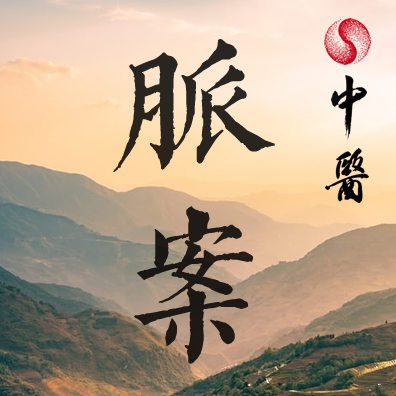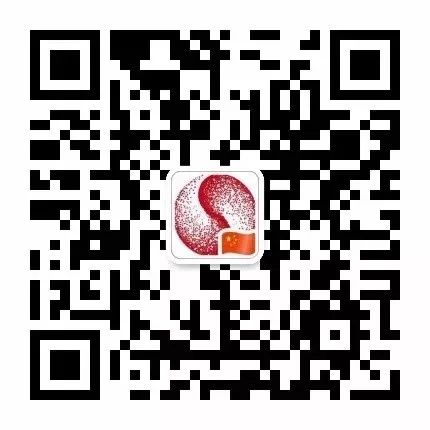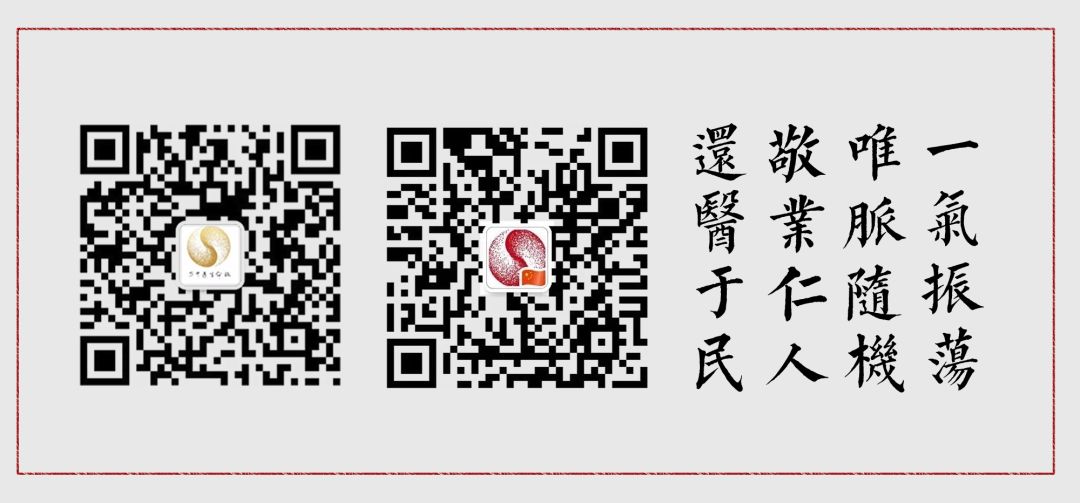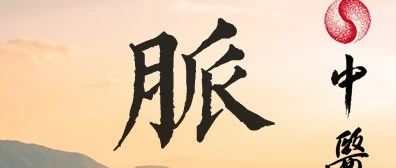
Since March, the leaders of the pulse case group have initiated weekly pulse discussion meetings, selecting one pulse case each time to focus on issues of deficiency and excess, cold and heat, dosage, randomness, and medication, which everyone is concerned about. Participants express their opinions, and Teacher Fei provides final comments and corrections, creating a resonant frequency that leaves students with lingering thoughts and many doubts resolved, benefiting both body and mind greatly.
Below are excerpts from the discussion meeting:
Wei GuoStudent Chang shares a pulse case
Initial Diagnosis: Male, 60 years old, February 2, 2024 (one week after the patient received small needle knife treatment).
Basic Information:Has been a chef since youth, lifting large spoons, owns a restaurant, and works in a damp environment.Drank white liquor daily in youth, has a lean constitution, and poor spleen and stomach function, eating little.At 50 years old, consumed2-3ice creams daily for over a year.Past medical history:Underwent small needle knife treatment for over ten days, each treatment caused sweating and worsened pain symptoms.
Main Complaint: Left sciatic nerve pain for 3 months, continuous.
Pulse Diagnosis: Qi and fluid deficiency, fine stasis, deficiency.
S1: Dang Shen (Codonopsis) 0.5g, Shu Di Huang (Rehmannia) 0.3g.
Changes: Qi and fluid Yang deficiency, stasis, right wrist cold.
Pain slightly reduced.
S2: Huang Qi (Astragalus) 0.5g, Shu Di Huang (Rehmannia) 0.3g, Zhi Ke (Bitter Orange) 0.1g, Niu Xi (Achyranthes) 0.1g, Bu Gu Zhi (Psoralea) 0.1g.
Pulse slightly rising, Qi and fluid Yang deficiency, stasis.
S3: Huang Qi (Astragalus) 0.5g, Shu Di Huang (Rehmannia) 0.3g, Bu Gu Zhi (Psoralea) 0.1g.
Follow-up on the second day:
Pain worsened in the afternoon, but no pain after midnight, slept well. Pain recurred at 7 AM, but was milder.
Pulse Diagnosis:: Qi and fluid deficiency, right joint blood stasis, left pulse damp stasis,偏虚.
S1: Huang Qi (Astragalus) 1g, Shu Di Huang (Rehmannia) 0.5g, Dan Shen (Salvia) 0.2g, Niu Xi (Achyranthes) 0.1g
Qi and fluid deficiency, right wrist cold.
S2: Huang Qi (Astragalus) 0.5g, Shu Di Huang (Rehmannia) 0.3g, Bu Gu Zhi (Psoralea) 0.1g.
Follow-up on the third day:
Daytime pain, slept well after midnight, pain at 7 AM, continuous.
Pulse Diagnosis:: Qi and fluid Yang deficiency, damp stasis,偏虚.
S1: Huang Qi (Astragalus) 2g, Shu Di Huang (Rehmannia) 1g, Bu Gu Zhi (Psoralea) 0.3g.
Pain slightly lighter, Qi and fluid deficiency, stasis.
S2: Huang Qi (Astragalus) 1g, Shu Di Huang (Rehmannia) 1g, Zhi Ke (Bitter Orange) 0.3g, Niu Xi (Achyranthes) 0.3g, Bu Gu Zhi (Psoralea) 0.1g.
S3: Huang Qi (Astragalus) 1g, Shu Di Huang (Rehmannia) 0.5g, Bu Gu Zhi (Psoralea) 0.1g.
Pain persisted on the third day, continuous treatment for 13 days, also used warming Yang herbs, pulse diagnosis mainly showed deficiency, stasis. Pulse condition did not improve significantly. Pain fluctuated.
Confusion: Why can’t we supplement a clearly deficient pulse?
Student Discussion
Xu: This case had 8 instances of medication, of which 5 were purely based on deficiency thinking, while the other 3 were primarily focused on deficiency. Could there be a misjudgment in the direction of deficiency and excess? Could the Qi mechanism be suppressed, yet it feels very deficient when palpated?
Chang: His pulse is obviously weak and flat, the pulse body is particularly clean, and the stasis is basically deep stasis.
Su: What are his dietary habits?
Chang: Usually eats little, has a very regular diet, normal bowel movements, sleeps well, but has trouble sleeping at night due to pain.
Su: After using Qi and fluid tonics three times, did the pulse become more substantial?
Chang: A little, but not significantly.
Su: After using Qi tonics for three consecutive days, on the third day, if 3g of Huang Qi (Astragalus) is used, if it is a deficiency syndrome, could it shift to a relatively random excess state?
Chang: The patient previously had sciatic nerve pain, which pulls and aches in the perineum to the anus. After adjusting the medication, this area no longer hurts. Despite using so much Huang Qi, there was no stagnation. When the pain occurs, he sweats profusely, indicating severe fluid deficiency. The pain can be alleviated a bit after medication. Previously, the pain was continuous, especially after the small needle knife treatment, worsening after 1 PM, with pain in the first half of the night, but after taking the medicine I prescribed, he could sleep, and around 1 AM he slept particularly well, but by 6 or 7 AM, it would start again. Later, he couldn’t sleep well in the second half of the night, fluctuating between good and bad. He no longer feels cold in his feet.
Su: When this person is in severe pain, does the pulse show any movement?
Chang: There was no urgent movement. When the pain is particularly severe and he sweats, the pulse is slightly moist. After half a month of adjustment, the pulse is still soft and weak.
Xue: I once adjusted a lady for your reference. At first, her pulse was particularly fine and dry. After 2-3 years of adjustment, using both patent medicines and decoctions, the compound Ejiao (Donkey-hide Gelatin) was the monarch drug, combined with some Qi tonics and stasis-resolving herbs. This patient was indeed quite deficient, leading a fitness class, in her 20s, with two children, belonging to a deficiency pulse. When she first came for adjustment, she woke up 5 times a night, but after adjustment, it reduced to 3 times, and after a year, she basically stopped waking up at night. After a year of stopping treatment, this is the third year, and recently she started coughing continuously, with phlegm coming out continuously, and her pulse widened.
Another thought is that a fine and dry pulse is a solid pulse, and after resolving dampness and damp stasis, the pulse pathway can also open up. It is important to see if the fine dryness is in the deep or superficial. If it is deep, focus on resolving stasis; if it is superficial, consider supplementing Qi and fluids. In any case, in such situations, one possibility is that the direction of deficiency and excess is incorrect, and another possibility is that the adjustment time is still insufficient.
Song: In clinical practice, when dealing with a pulse that is both deficient and has stasis, the dosage of Qi tonics used is generally not large, because Qi tonics are generally more uplifting. The combination of Qi tonics and Yin-nourishing herbs, if the dosage is not well matched, the effect will not be good. For such pulses, it is generally better to use warming Yang and nourishing Yin.
Li: The pulse of a deficiency pulse is not easy to adjust in a short time. The pulse condition does not show much improvement immediately. I remember some children’s pulses, after supplementing deficiency, the immediate effect was okay, but after a few days, it returned. Some children’s pulses, under correct syndrome differentiation, need to go through a full cycle of seasons to change. A few months may not show much improvement, but after the new year, as the child develops, the pulse gradually takes root. One must have a long-term perspective.
Another common mistake is mistaking a damp pulse for a deficient pulse. A damp pulse feels like water floating on cotton; when encountering a damp pulse that is also fine and moist, it may be mistaken for a weak pulse, but using tonics will not be effective. In the initial discussion, it was mentioned that a damp pulse (ru pulse) indicates a decline in the body’s vitality, but it does not mean there is no energy; it is just that the pulse has a weak sense of difference. At this time, using some damp-resolving herbs can help the pulse condition improve. In clinical practice, there was a girl with constipation, whose pulse lacked vitality, floating and weak, but when pressed down, it felt like there was something underneath. Using tonics was ineffective and caused signs of heat, but after resolving dampness, she was able to have a bowel movement after taking just two doses of decoction.
Zheng: My mother has a deficiency pulse and always has headaches. The pulse is both fine and dry, with a hollow and sunken wrist pulse. I give her Dang Shen (Codonopsis) 0.2g, Shu Di Huang (Rehmannia) 0.1g, plus a small amount of stasis-resolving herbs. After continuous adjustment for a period, the effect was good; the pulse changed from hot to cool, and from fine and dry to slightly wider, with a hint of coolness emerging from the wrist pulse. After a month of adjustment, she experienced fever and excessive phlegm, and thereafter the pulse vessels clearly widened, and the pulse pathways between the right joint and right wrist gradually began to feel fuller, indicating that the pulse vessels were starting to extend downward.
Student Chang’s Insights
1. I gained a lot tonight. I may have been too eager with the medication at the time, somewhat led by the symptoms, always wanting to quickly improve the symptoms, supplementing too much and too frequently. The pulse feeling at that time may differ from now. Looking back, when I supplemented excessively, dampness also appeared, indicating that my judgment on the direction of deficiency and excess was still inaccurate, and I need to work harder on this aspect.
Everyone shared their experiences with deficiency pulses and urgent deficiency pulses. The reason for the inability to supplement deficiency is that the space has not opened up; one cannot supplement too much, but rather little by little. Once the space opens up, it can be supplemented. Additionally, Brother Zheng shared that fine damp pulses are also common and can easily be misjudged as deficient pulses. However, if Qi and fluids are supplemented, they cannot be absorbed, so we must improve our ability to discern the pulse accurately, or else we will easily make mistakes.
2. I primarily use Qi and fluid tonics, along with warming Yang, but my medication is somewhat mixed, and the pulse condition does not change much, indicating that the pulse is still inaccurate. In seeking effectiveness, impatience leads to disorder; when palpating the pulse and prescribing medication, it naturally becomes chaotic, compounding mistakes. I let the symptoms lead me, neglecting the overall view, which is counterproductive.
“Calm down and savor it slowly”—think more and gain insights, purify the mind, and harmonize the two extremes of body and mind, finding joy in it.
Teacher Fei’s Comments
Based on the patient’s basic information and Student Chang’s pulse diagnosis and medication situation, it is inferred that this is a patient with cold closure due to deficiency, which is why Qi cannot be supplemented and the symptoms do not change much. The discussions and suggestions provided by everyone are excellent, leading us to deeper thoughts and insights. A student once mentioned that for fever patients, using both cold and heat treatments can be particularly effective, but he had a fever patient who continued to have a fever despite using both. The next day, the patient returned, and he continued to prescribe medication, but the fever persisted. By evening, the patient had a high fever that would not subside. He forced himself to carefully palpate the pulse and discovered that it was cold, damp, and stagnant, without heat movement. He gritted his teeth and prescribed warming herbs to resolve cold, damp, and stasis without adding heat-clearing herbs. After taking two doses, the fever subsided immediately. This student expressed deep regret for falling into the routine of treating symptoms with medication. As the teacher said, what one has in mind is what one feels in the pulse; if one cannot discern the true pulse condition, one cannot adhere to the principle of pulse diagnosis over symptoms. Learning S resonance TCM, the key lies in the clinical application of techniques. Student Chang’s failed case summary and reflection are very meaningful, as the master often reminds us to summarize cases, especially failed ones, which are the most important to study and focus on for rapid improvement. Our focus in S resonance TCM is on the state of Qi and fluid circulation that all local organs rely on for survival, which is the root of disease. The treatment duration varies according to the disease; for severe Qi and blood deficiency, the treatment duration will naturally be longer, and it also requires good cooperation from the patient. There is no other way, as the occurrence and evolution of disease are inseparable from the patient’s usual misconceptions and bad habits. Only through mutual understanding and effort between doctor and patient can we achieve the desired effect of restoring balance and preventing evil from invading.

 End
End

Join the Learning
Scan to add assistant WeChat

 This issue edited by: Xu Linjing
This issue edited by: Xu Linjing
Proofread by: Publicity Department
Chief Editor of Publicity Department: Hou Haijing
Members of the Publicity Department: Zhao Xicheng/Zhao Ge/Zheng Xing/Ni Deli/Xu Linjing/Xue Lian/Zhang Shu/Liu Qihan



